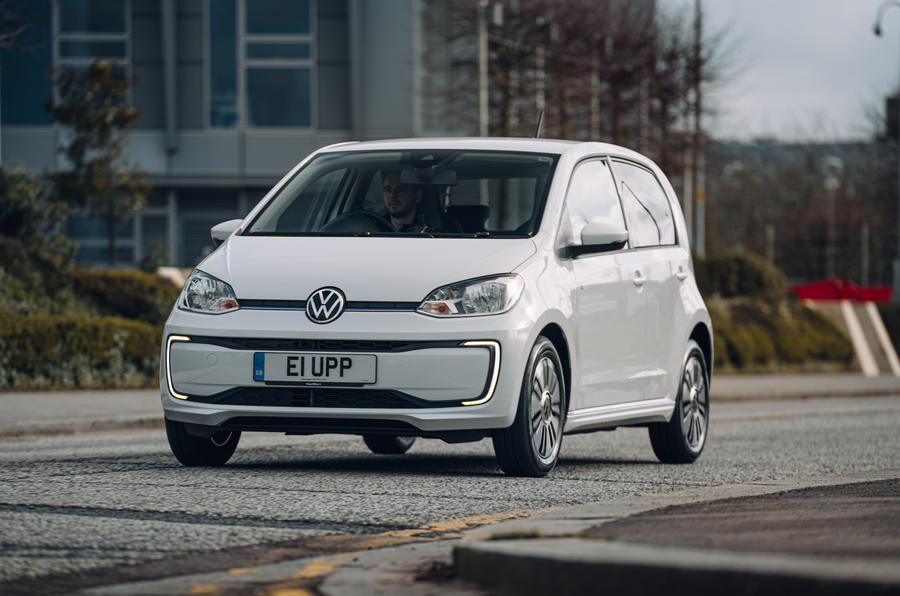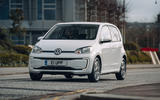It’s as well to remember, of course, that once you’re at cruising speed, allowing any car to coast on its accumulated kinetic energy is always the most efficient option, and that slowing down and speeding up for the sake of it can never be as energy-savvy. Having said that, when you really need to slow the car down, the e-Up’s regenerative braking options allow you a choice of how you’d like to do it, and they leave it with one of the less woolly and imperfect-feeling brake pedals if you do choose to ramp up the motor braking.
Accelerator pedal response is predictably good and particularly linear, meanwhile, and outright performance is smirk-inducingly swift from town speeds, remaining moderately perky even at B-road pace. The e-Up is something of a nipping specialist. It’s small enough and brisk enough to seize opportunities in traffic that other cars couldn’t, you can see plenty out of it and judge its size easily, and it feels suited to the urban environment in a similar way to the BMW i3.
At higher speeds, the car’s weight occasionally makes its presence felt, but much more so over long-wave bumps than when cornering. Although its lateral grip levels aren’t particularly special, the e-Up’s lateral body control is quite good and it feels nicely agile around tighter bends. The car’s body isn’t brilliantly isolated from wind noise at motorway speeds, but if you keep it off high-speed dual carriageways, as many owners surely will, it does at least ride reasonably quietly and with decent bump compliance.
Real-world energy efficiency and range will depend on where and how you drive the e-Up. On a route of mixed A-road and motorways at normal speeds, it’ll get 110 miles out of a full charge, or might do 5% better throughout the warmer summer months. Keep your speed below 50mph and stick in and around the urban sprawl and you might see more like 130 miles, depending on how efficiently you’re minded to drive. This is a car that you may set out to drive like a saint, after all, but its zippy, impish charms might easily seduce you.























Join the debate
Add your comment
What's the payback time? How
Why don't they offer the
Why don't they offer the option of a 3-door version? They've already engineered one, and its still offered in petrol versions. Despite what manufacturers and motoring journalists say, there are still many people, like me, who want or need a small 3-door vehicle.
A bland, boring,
A bland, boring, characterless, sh*te car from an evil, arrogant company, I d walk than drive anything from VW Group.